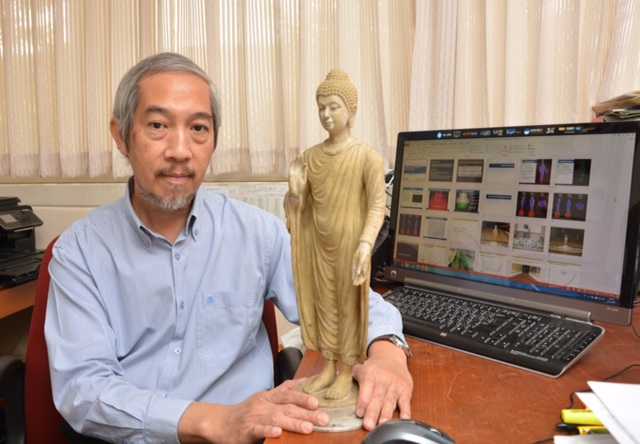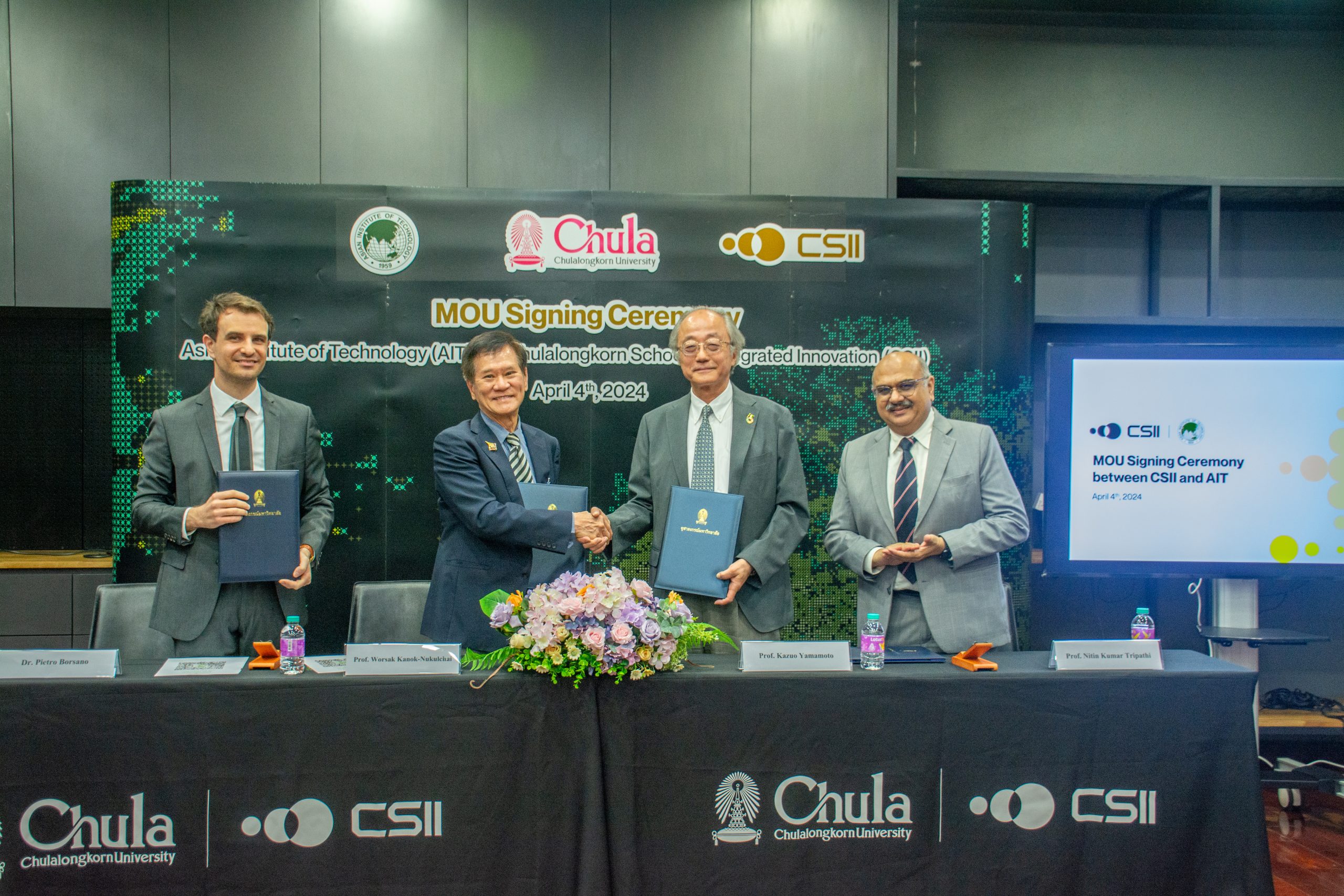
Prof. Pennung Warnitchai with the model of Buddha Metta Statue.
When the tallest statue of Lord Buddha was being created in Thailand, the Crown Property Bureau thought of the one organization it could rely on for checking and verifying the stability of the structure: the Asian Institute of Technology (AIT).
The 32-metre tall Phra Phuttha Metta Pracha Thai Trailokkanat Khanthararat Anuson, which was inaugurated in December 2015 by Her Royal Highness Princess Maha Chakri Sirindhorn in Kanchanaburi’s Huay Krachao district, has a very strong association with AIT. Thailand’s premier earthquake expert, Prof. Pennung Warnitchai of AIT’s School of Engineering and Technology (SET) provided the Structural Design Review of the statue.
“The statue is the tallest standing configuration in Thailand, and we were asked to review the design to ensure that the structure has the ability to withstand extreme wind and ground shaking caused by earthquakes,” said Prof. Pennung. Moreover, the structure is unique since it is not in a sitting position, which would provide stability. Instead, the standing pose has the entire structure standing on two legs, which raises serious design and stability challenges.
“AIT was chosen because we are not only an independent education and research institute but also because we possess the expertise and we co-host (along with Thammasat University) the longest wind tunnel in Thailand,” said Prof. Pennung, a recognized leader in this field, having developed Thailand’s design standards for both earthquakes and wind.
Kanchanaburi Province, where the statue was to be created, is known for active faults, and although no major earthquake has been recorded in the area, it is under strong seismic threat. “We checked stability for earthquakes and wind based on a 1,000-year period,” Prof Penning says. Given an average wind speed of 40.7 meters per second and a peak speed 60–70 percent higher, we checked for maximum sway and twists for front-to-back as well as sideways configurations.
A critical factor was that while in ordinary structures, there can be allowance for some damage, in this case, we could not take any chances, said Prof. Pennung.
The steel structure, the connection between the leg and the base, the concrete base, and the rock foundation were analyzed. Similarly forces, stresses, and deformations were checked with the corresponding ability to withstand these pressures. The AIT report found that all primary members of the structure were up to the mark, though some secondary members had minor issues. “Our recommendations provided the basis for some design corrections, which were then implemented,” adds Prof. Pennung.
Led by Prof. Pennung, the team included Dr. Punchet Thammarak, lecturer in Structural Engineering at AIT; Mr. Thaung Htut Aung and Mr. Mohiul Islam Ahmed of AIT Consulting; and Mr. Kanin Srisopa, a doctoral student working with Prof. Pennung.
The AIT Report titled “Structural Design Review of Buddha Metta Statue, Kanchanaburi, Thailand” was submitted in February 2013, following which its recommendations were incorporated in the final design. Construction began shortly thereafter, and in December 2015, the statue was inaugurated by Her Royal Highness Princess Maha Chakri Sirindhorn.
News coverage of the AIT contribution is also available at these links:
ThaiRath http://www.thairath.co.th/content/554557
Daily News http://www.dailynews.co.th/women/370983







